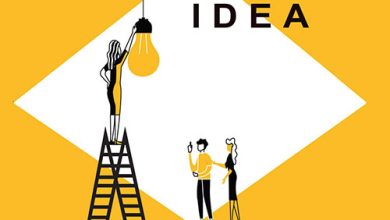E-PRODUCTIVITY

DIGITAL DISTRACTIONS
Busting the myth of ‘productive multitasking’
BY Jayashantha Jayawardhana

Have you noticed how your phone receives a message or an alert every few minutes or so? A friend chats on WhatsApp, your bank texts about a recent funds transfer, someone comments on your Facebook status and there are notifications of new messages in your inbox…
Most of us simply reach for our phones – as if by reflex – every time we hear an alert since we’ve grown accustomed to these digital distractions and consider it to be normal. In fact, we’re so overloaded with digital information that we can’t stay focussed on an important task for more than 15 minutes at a time.
This is anything but normal however, and it’s far more debilitating than we wish to believe.
The culture of hyper connectivity takes a huge toll on us both personally and professionally. We squander precious time, attention and energy, on relatively trivial information and interactions. This keeps us busy but doesn’t produce anything of value. But once in a blue moon, one of those beeps can be about a matter of life or death.
As a team of researchers from Stanford University has explained, people who regularly juggle a few streams of content don’t pay attention, memorise or manage their tasks as well as those who focus on one thing at a time.
The Information Overload Research Group – which is a nonprofit consortium of business professionals, researchers and consultants – reports that knowledge workers in the US waste an estimated 25 percent of their time dealing with large and growing data streams. This costs the economy over US$ 995 billion annually. To put it in context, the GDP of Switzerland in 2019 was around 700 billion dollars.
In June 2015, the Harvard Business Review (HBR) published an article titled Conquering Digital Distractions. It captured the divergent views of two experts – psychologist Larry Rosen and technologist Alexandra Samuel.
Rosen urges us to systematically turn away from the information stream and shift our attention to more energy inducing activities. However, Samuel claims that the optimal way to conquer these distractions is through the strategic use of digital tools. Taken together, their solutions provide a useful lead on how we can address this complex and growing challenge.
Multitasking isn’t always successful, says Rosen. We can do two things simultaneously but only when at least one task is automatic. So we can chew gum and walk at the same time. But can we read an important report while watching news on TV or compose an email while attending a conference call?
Gloria Mark, who is a researcher at the University of California Irvine, has found that workers typically attend to a task for three minutes on end before switching to something else (generally, digital communication) and it would take them approximately 20 minutes to return to the original activity.
Rosen won’t classify overuse of digital devices as an addiction because there’s no pleasure to gain from it. He says this behaviour is driven by an anxiety disorder, which is the fear of missing out or being offline – and that borders on obsession.
He recommends three strategies to address this.
The first is to check all electronic communications in one go, then put the phone down for 15 minutes before checking it again. One then progressively prolongs this interval to the extent where we’re certain that it doesn’t affect our work anymore.
And the second strategy is to take a recharging break every 90 minutes if we’re multitasking with technology.
Thirdly, he urges us to remove digital devices from our bedrooms at least an hour before going to bed.
On the other hand, Samuel believes that the antidote to such insidious distractions can only be found in the digital tools themselves. She notes: “Turning off is simply not a tenable solution in the digital age. With so much work, communication and socialising taking place on screens, few of us can afford to be offline for significant portions of the workday (or even evenings and weekends).”
Emails can be one of our biggest distractions. If we’re obsessed with checking every new email in our inbox, we won’t have much time left for anything else.
But the good news is almost all major email clients now allow us to set rules and filters so we can automatically direct less important mails to separate folders, which can be read at leisure. We must subscribe only to that which we wish to receive.
In the case of news, automation can be a vital source of help. We can use a newsreader app such as Feedly or Flipboard, and subscribe to what’s essential to our line of work and interests. To stay active on social media without spending hours scrolling, we can use tools such as Hootsuite or Buffer. These will help us reach multiple networks from one place and schedule posts in advance.





